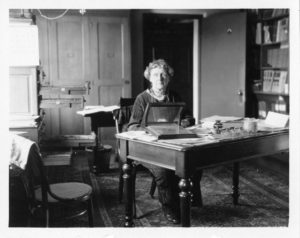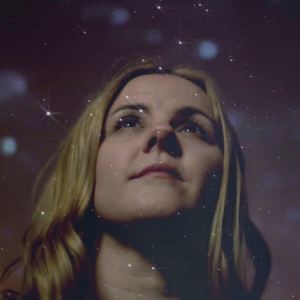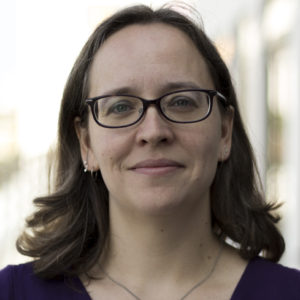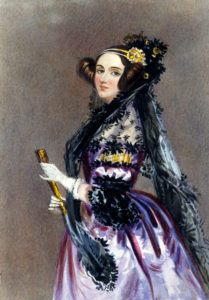Every year, thousand upon thousand of tweets are sent about Ada Lovelace Day, sending our hashtags trending around the world. Here are some of the ones that caught our eye from Ada Lovelace Day 2016!
Williamina Fleming and Annie Jump Cannon: Harvard computers
Guest post by Sue Bowler, for the Royal Astronomical Society, Platinum Sponsor of Ada Lovelace Day Live 2016.
Continuing with their series of articles on early women members of the Royal Astronomical Society published in Astronomy and Geophysics, Sue Bowler discusses the contributions of Williamina Fleming and Annie Jump Cannon in photographic astronomy.

Annie Jump Cannon at Harvard College Observatory (Smithsonian Institution Archives)
Towards the end of the nineteenth century, Harvard College Observatory employed a team of women to analyze the spectra of stars, an endeavour that resulted in the standard classification scheme for stars, still used today. Williamina Fleming, Annie Jump Cannon and Henrietta Leavitt stand out among the ‘Harvard computers’, so named because their work was to carry out the many repetitive calculations necessary for scientific astronomy.
Edward Pickering was the Director of Harvard College Observatory at a time when the new field of photographic astronomy required careful measurement of the position of stars and their spectra on large glass plates. The role of computer was a lowly one, and it paid very poorly, lower than a factory girl’s wage. But it appealed to educated women, often the products of the new colleges such as Vassar and Wellesley that taught the sciences and even astronomy.

Williamina Fleming (The New England magazine (1887), p. 166).
Annie Jump Cannon was among those who came to Harvard as a computer, attracted by a role that offered employment and scientific stimulation. She developed a spectral classification system adopted by the International Astronomical Union in 1922 and ended her career at Harvard as a world-renowned astronomer.
Cannon’s work built on that of Williamina Fleming, a married woman from Scotland abandoned by her husband in America. She was Pickering’s housekeeper before working at the Observatory and, as well as considerable achievements in observational astronomy and spectral classification of stars, she organized the computers, in a role we would now recognize as something between office manager and head of a research group.
Both Fleming and Cannon were made honorary members of the RAS before women could become Fellows. Their work has lasted, demonstrating the contribution that women could make at a time when astronomy in the US was becoming a profession as well as an interest.
You can read more about Annie Jump Cannon in the journal Astronomy and Geophysics, and Sue Nelson wrote about Williamina Fleming for Astronomy and Geophysics, a longer version of which is also in our book, A Passion for Science.
Bowler, S. (2016), “Annie Jump Cannon, stellar astronomer”, Astronomy & Geophysics, 57(3) 3.14-3.15.
Ep 6: Prof Haley Gomez & Dr Karen Masters
iTunes | Google Play | RSS (Soundcloud) | Stitcher
Welcome to the Ada Lovelace Day podcast, highlighting the work of women in STEM. Each month, we talk to women from around the STEM world about their careers, as well as talking to women and men, about historic and modern women’s achievements, discoveries, and inventions.
In this episode
01:33: Astrophysicist Professor Haley Gomez talks about how cosmic dust is formed, how it affects our view of the universe, and it’s role in the formation of planets.
26:53: Astronomer Dr Karen Masters talks about Mary Somerville, mathematician, astronomer and translator of Pierre-Simon Laplace’s book about the Solar System, Mécanique Céleste.
Our interviewees
Professor Haley Gomez
 Professor Haley Gomez is an astrophysicist working at Cardiff University’s School of Physics and Astronomy. She uses the most sensitive infrared cameras in space, such as the Herschel Space Observatory and the James Web Space Telescope, to reveal the origins of the building blocks of life: cosmic dust grains. She has published over 100 papers, and her research has been recognised with an award from the Royal Astronomical Society for noteworthy contribution for an early career researcher. In 2015, she was also awarded a prestigious and highly competitive grant worth €1.8 million to measure the dust content of galaxies since the Big Bang.
Professor Haley Gomez is an astrophysicist working at Cardiff University’s School of Physics and Astronomy. She uses the most sensitive infrared cameras in space, such as the Herschel Space Observatory and the James Web Space Telescope, to reveal the origins of the building blocks of life: cosmic dust grains. She has published over 100 papers, and her research has been recognised with an award from the Royal Astronomical Society for noteworthy contribution for an early career researcher. In 2015, she was also awarded a prestigious and highly competitive grant worth €1.8 million to measure the dust content of galaxies since the Big Bang.
Throughout her career, she has also taken a leading role in bringing research to the public and, in particular, encouraging girls and children from disadvantaged backgrounds. She received an Inspire Wales Award in 2014 for most inspirational person in the Science and Technology Category for this work.
You can find out more about Haley on her website, watch her TED talk at the bottom of this page, and can follow her on Twitter: @astrofairy.
Haley’s work has featured in a number of articles:
- Phys.org: Universe becoming cleaner as cosmic dust gets mopped up by stars, astronomers reveal
- Space.com: Violent star explosion reveals origins of space dust
- Phys.org: Explosive origins for cosmic dust
Dr Karen Masters
 Dr Karen Masters is an astronomer working at the Institute of Cosmology and Gravitation, University of Portsmouth in the UK. She is the spokesperson for the Sloan Digital Sky Survey (SDSS-IV) and the project scientist for the Galaxy Zoo Citizen Science Project. As well as working on her research into galaxy evolution, she has a passion for science (especially astronomy) outreach and public engagement, and for the promotion of equality and diversity in STEM. Karen contributes to the Galaxy Zoo blog and the SDSS science blog.
Dr Karen Masters is an astronomer working at the Institute of Cosmology and Gravitation, University of Portsmouth in the UK. She is the spokesperson for the Sloan Digital Sky Survey (SDSS-IV) and the project scientist for the Galaxy Zoo Citizen Science Project. As well as working on her research into galaxy evolution, she has a passion for science (especially astronomy) outreach and public engagement, and for the promotion of equality and diversity in STEM. Karen contributes to the Galaxy Zoo blog and the SDSS science blog.
You can find out more about Karen on her blog, The Beautiful Stars, and can follow her on Twitter, @KarenLMasters. And you can also read an excerpt from her More Passion for Science chapter about Mary Somerville, and read the Royal Astronomical Society’s blog post on Somverville.
Thanks to our sponsor
This podcast is brought to you thanks to the generous support of ARM, our exclusive semiconductor industry sponsor. You can learn more about ARM on their website at ARM.com and you can follow them on Twitter at @ARMHoldings.
If you would like to join ARM as a sponsor of the Ada Lovelace Day Podcast, please email us.
Get in touch!
If you’d like to send us feedback about the show, or if you’d like to take part, please email us. We’re especially interested in hear from men who would like to talk to us about the women in STEM who have influenced them, especially those women who are less well known.
Credits
Episode edited by Andrew Marks.
Our links
Videos
Mary Somerville: Polymath and pioneer
![Mary Somerville [Fairfax]. Lithograph after J. Phillips. Credit: Wellcome Library, London. Wellcome Images images@wellcome.ac.uk http://wellcomeimages.org Mary Somerville [Fairfax]. Lithograph after J. Phillips. Published: - Copyrighted work available under Creative Commons Attribution only licence CC BY 4.0 http://creativecommons.org/licenses/by/4.0/](https://findingada.com/wp-content/uploads/2016/08/Mary-Somerville-portrait-Wellcome-240x300.jpg)
Mary Somerville [Fairfax]. Lithograph after J. Phillips. Credit: Wellcome Library, London. CC BY 4.0
Continuing with their series of articles on early women members of the Royal Astronomical Society published in Astronomy and Geophysics, Allan Chapman looks at the life and work of Mary Somerville, one of the first honorary members of the Royal Astronomical society.
Mary Somerville’s scientific interests were many and varied – and her success in pursuing them over a long life especially notable for a woman in the nineteenth century. She was fascinated by electromagnetism, wrote treatises on astronomy and geophysics, studied the physics of photography and the chemistry of plants, and produced articles and books aimed at both the scientific and more popular audience. Underpinning everything was her deep understanding of and profound belief in the mathematical foundations of the universe, something that had first been sparked by an encounter with an algebraic puzzle in a fashion magazine.
Mary’s upbringing was unconventional. The daughter of a naval captain who was absent for most of her childhood, she was not sent away to school, but allowed to run wild at home and learn as she wished; her father, upon his return, described her as a little ‘savage’. Mary was later schooled in the accomplishments expected of a woman of her time, but continued to teach herself mathematics, aided by her brother and her father’s books on navigation. Worried about the effects of scientific learning on her sanity (and social standing), her parents limited her access to books, and Mary’s first husband, Captain Samuel Grieg, openly disapproved of her scientific interests. None of this dissuaded Mary, and when Grieg died, leaving her a widow of independent means, she began her scientific studies in earnest.
Mary’s second marriage, to Dr William Somerville, opened up a world of opportunity for her. Somerville, himself a renowned and well-travelled doctor, was proud of Mary’s work, and did everything he could to aid her scientific pursuits. With his support she immersed herself in the scientific community, gaining fame via her conversations and letters, before publishing her first scientific paper in the Royal Society’s Philosophical Transactions in 1826. She went on to write four significant and respected scientific books, was one of the first two female Honorary Members of the Royal Astronomical Society, alongside Caroline Herschel; in 1879 Somerville College, Oxford was named in her honour.
You can read more about Mary Somerville on the Astronomy and Geophysics website, and there’s an excerpt from Dr Karen Masters’ chapter about her from the ALD book, More Passion for Science.
Chapman, A. (2016), “Mary Somerville: pioneering pragmatist”, Astronomy & Geophysics, 57(2) 2.10-2.12.
Explore Ada Lovelace’s Bernoulli program with Wolfram
 In 1843, Ada Lovelace became the first person to publish what we would now call a computer program, a set of instructions to calculate Bernoulli’s Numbers, written for Charles Babbage’s unbuilt Analytical Engine. Lovelace had translated a paper about the Analytical Engine written in French by Italian mathematician Luigi Menabrea, and had at Babbage’s suggestion added her own notes explaining the potential of the Analytical Engine in depth.
In 1843, Ada Lovelace became the first person to publish what we would now call a computer program, a set of instructions to calculate Bernoulli’s Numbers, written for Charles Babbage’s unbuilt Analytical Engine. Lovelace had translated a paper about the Analytical Engine written in French by Italian mathematician Luigi Menabrea, and had at Babbage’s suggestion added her own notes explaining the potential of the Analytical Engine in depth.
You can now explore the Bernoulli program using the Wolfram Language, a symbolic language which “emphasizes symbolic computation, functional programming, and rule-based programming”.
The interactive notebook begins with the Gauss Schoolboy Problem:
As a young schoolboy, [German mathematician Carl Friedrich Gauss] was tasked with adding the first 100 integers, i.e. what is 1 + 2 + 3 + 4 + … + 98 + 99 + 100? (The answer is 5,050.) Gauss reportedly produced the correct answer within seconds. How did he do this?
The workbook demonstrates how to calculate these numbers, and thus then how to calculate Bernoulli Numbers, “a sequence of rational numbers with deep connections to number theory.” From the workbook:
Back in the 1600s, people spent their lives making tables of sums of powers of integers. But Jakob Bernoulli pointed out that all such sums can be expressed as polynomials, with the coefficients being related to what are now called Bernoulli numbers. And in 1713, Bernoulli was proud to say that he had computed the first 10 Bernoulli numbers ‘in a quarter of an hour’—reproducing years of other people’s work.
Ada Lovelace was calculating these numbers by hand!
You can also scans of Lovelace’s letter to Babbage discussing the Bernoulli numbers at the end of the workbook.
The workbook was created by Wolfram Research, makers of Mathematica and Wolfram|Alpha.
was created by Wolfram Research, makers of Mathematica and Wolfram|Alpha.